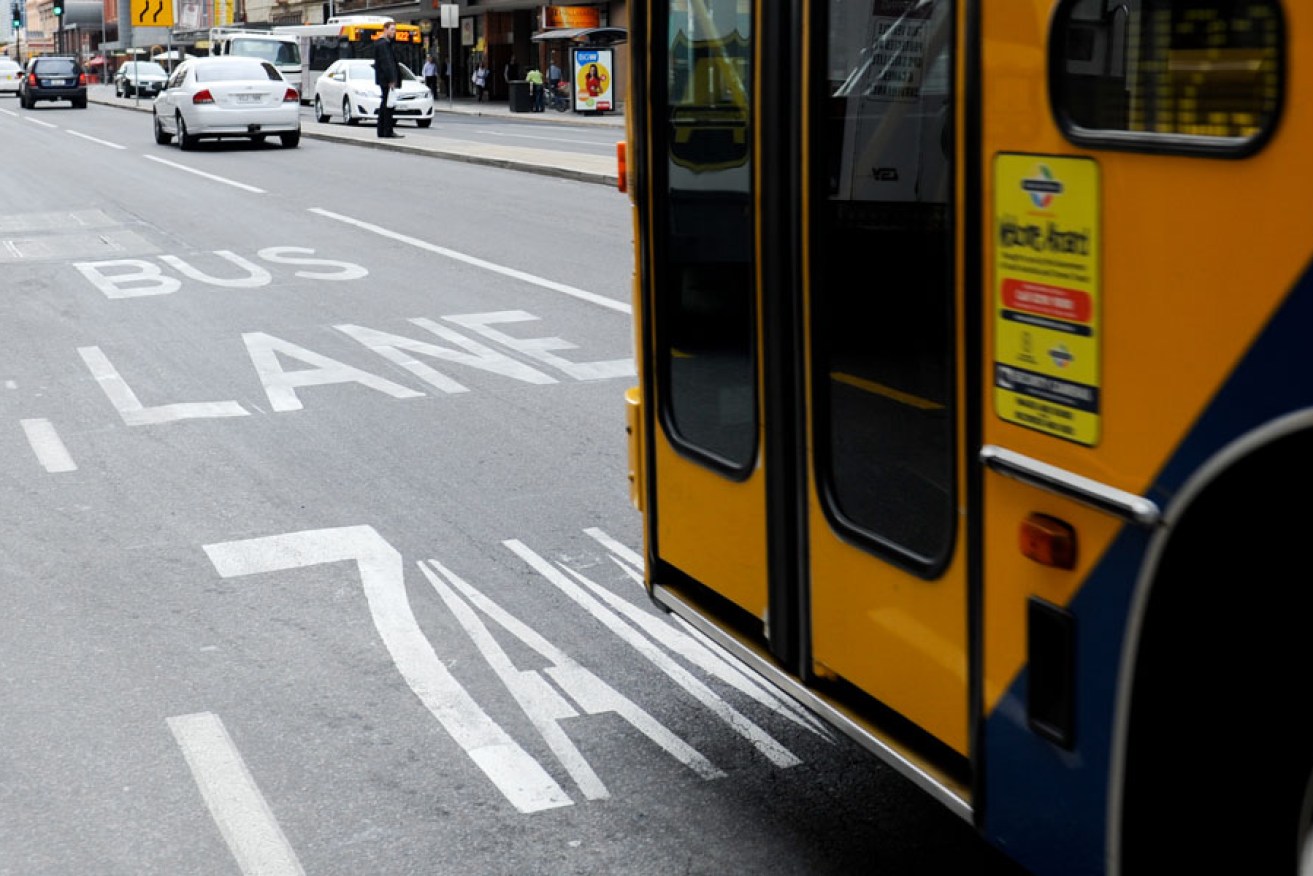City bus lanes here to stay: Mullighan


The Grenfell Street bus priority lane. Photo: Nat Rogers/InDaily
Transport Minister Stephen Mullighan says bus priority lanes in the city are here to stay, despite ongoing pressure from the RAA and the Adelaide City Council.
One lord mayoral candidate, Mark Hamilton, has made the bus lanes a council election issue, calling for their scrapping as part of his platform.
However, Mullighan told InDaily the bus lanes were here to stay – and more might be on the way.
“We’re not removing them,” he said.
“I think the RAA’s position is a bit more nuanced (than Hamilton’s), in that they represent motorists.
“If you approach the question from a motorist’s perspective then your first thought might be – maybe this isn’t a great thing for me. But that ignores (the fact that) if you’re encouraging more and more people to take a bus, you’ll get more cars off the road.”
In May the council called for the bus priority lanes – in Grenfell/Currie streets, and West Terrace – to be opened to private cars carrying passengers in order to reduce congestion.
However, Mullighan appeared less than enthusiastic.
‘We still have not received correspondence from Adelaide City Council about this proposal,” he said.
“The feedback we’ve been receiving from operators and drivers is that priority bus lanes are making a significant contribution to improved on-time running and reliability across the bus network.”
He said that while the Government didn’t have active plans to introduce more bus lanes, it would be investigating that possibility.
“I think we have to – we have to look at how all three modes of public transport can be made more efficient and effective,” he said.
“They (bus priority lanes) have been successful. We probably couldn’t quantify the success in terms of patronage, but we certainly can quantify it in terms of on-time running for those bus services.
“What the contractors tell us is that on a bad day, previously it could take them 20 minutes to traverse the length of the CBD getting down Grenfell Street. Now, that problem is not completely eliminated but massively reduced, so that their on-time running is benefiting.”
Mullighan, elevated straight into the ministry in his first term as an MP, said in his view the options for new bus priority lanes were limited to roads feeding into the city that had at least three lanes.
“We don’t have plans to extend the bus priority lanes right now, but we are thinking about what the opportunities are, so in the future we can look at doing that.
“It gets hard to introduce bus priority lanes on roads where you don’t have multiple lanes – roads where you don’t have three lanes or more.”
He said North East Road, Port Road and Anzac Highway were the three options that came to mind.
The performance of public transport buses has been under heavy fire since new contracts were introduced in 2011.
The focus of patrons’ ire has been unreliable services and poor on-time running.
While he’s not suggesting changes to the performance measures of bus contractors, Mullighan said several of the companies running Adelaide’s buses had flagged different performance models.
In other jurisdictions, for example, some operators have had incentives built into contracts which focus on patronage growth rather than on-time running. This gives the operator more flexibility in scheduling services in a way that they believe might maximise patronage.
“We haven’t gone down that route with the bus contracts in Adelaide because first and foremost we’re about providing a consistent and reliable service,” he said.
Mullighan said on-time running was trending upwards with each quarter.
The latest statistics bear that out – but there is clearly much to do to stem the downward trend in Adelaide public transport patronage over the past five years.
To do this, the young minister is counting on continuing improvement in the bus system, and ongoing tweaking of timetables to build capacity on the most popular corridors. The limited tram system is at capacity in peak times, but the train system has a lot of upside, with new generation electric trains to be introduced to the Seaford and Tonsley lines. This will allow the department to retire the clunky old 2000 series trains, and switch more diesel trains to lines which are experiencing growth, such as the Gawler service.
Mullighan said that building public transport patronage would be imperative over the coming decades as Adelaide’s population grows and changes.
However, he is frustrated with the transport debate in Adelaide, which is often couched as a sort of competition between different transport modes.
“I think that there’s been a lot of noise which has been framed as one mode of transport versus another – cars versus cyclists, for example, which I think is unfortunate,” he said. “Because one thing the (integrated transport plan) talks about is not just how we’re using land over the next 30 years, but how we’re going to access it in terms of transport networks.
“I don’t think anybody would reasonably say that in 30 years’ time, with the population growth that we’ll have, that the mode share of transport will remain as it is today. It has to change.
“We need to get more people on to public transport, more people should be able to avail themselves of walking and cycling, particularly if more people are going to live in the city. So that means we’ve got to continually entice people out of their cars and on to other forms of transport – whether it’s public transport, walking or cycling.”




